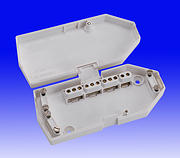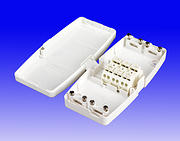Hi folks in the process of installing a set of 12v spot lights, each one has a transformer.
Th connector for the cable will only take a single 1.5mm cable. Therefore to jump from one transformer to the next with the 240 ring the 2 cables making the loop need to drop down to a single cable as the transformer will not take both cable.
My question is:
What is the best way to reduce the cables should I bring the 2 cables in to a connector block and one cable our
Or
Use a crimp connector crimping 2 cables one end and one the other.
Or
Is there another way it could be done.
All cables will be located in the loft and not accessible by anyone.
Also all the wiring will have to be signed off by building control so I need to make sure it meets current regs.
Any help or advice welcomed
Cheers
Job
Th connector for the cable will only take a single 1.5mm cable. Therefore to jump from one transformer to the next with the 240 ring the 2 cables making the loop need to drop down to a single cable as the transformer will not take both cable.
My question is:
What is the best way to reduce the cables should I bring the 2 cables in to a connector block and one cable our
Or
Use a crimp connector crimping 2 cables one end and one the other.
Or
Is there another way it could be done.
All cables will be located in the loft and not accessible by anyone.
Also all the wiring will have to be signed off by building control so I need to make sure it meets current regs.
Any help or advice welcomed
Cheers
Job



 one shown here
one shown here


